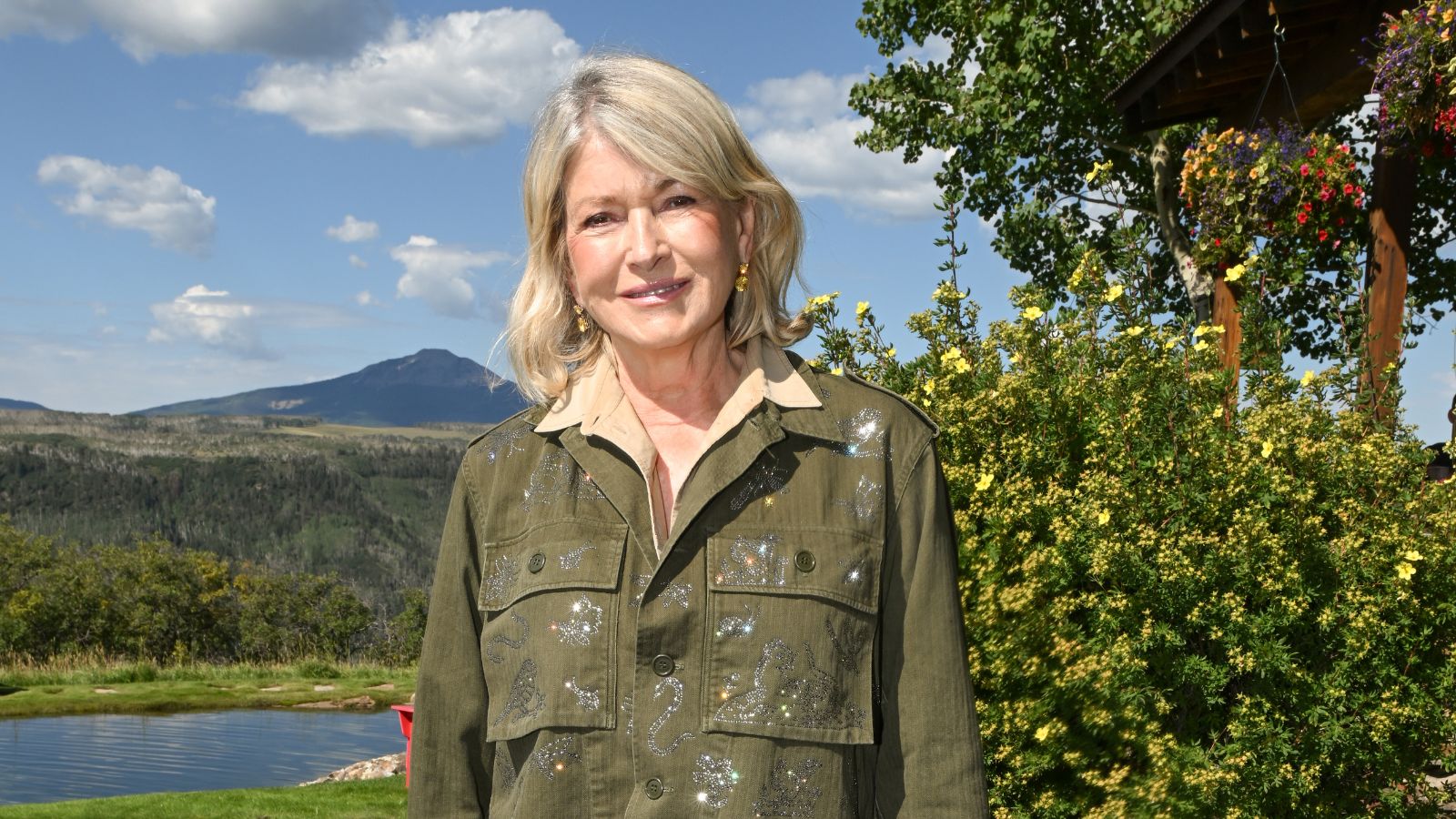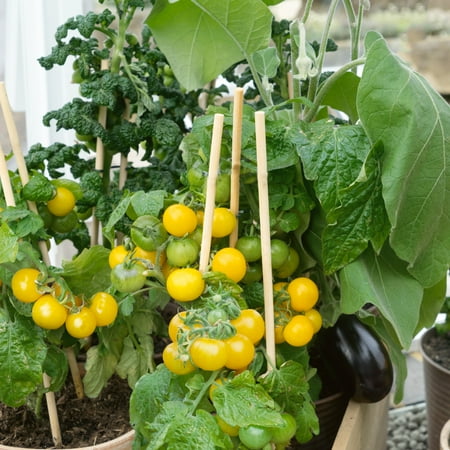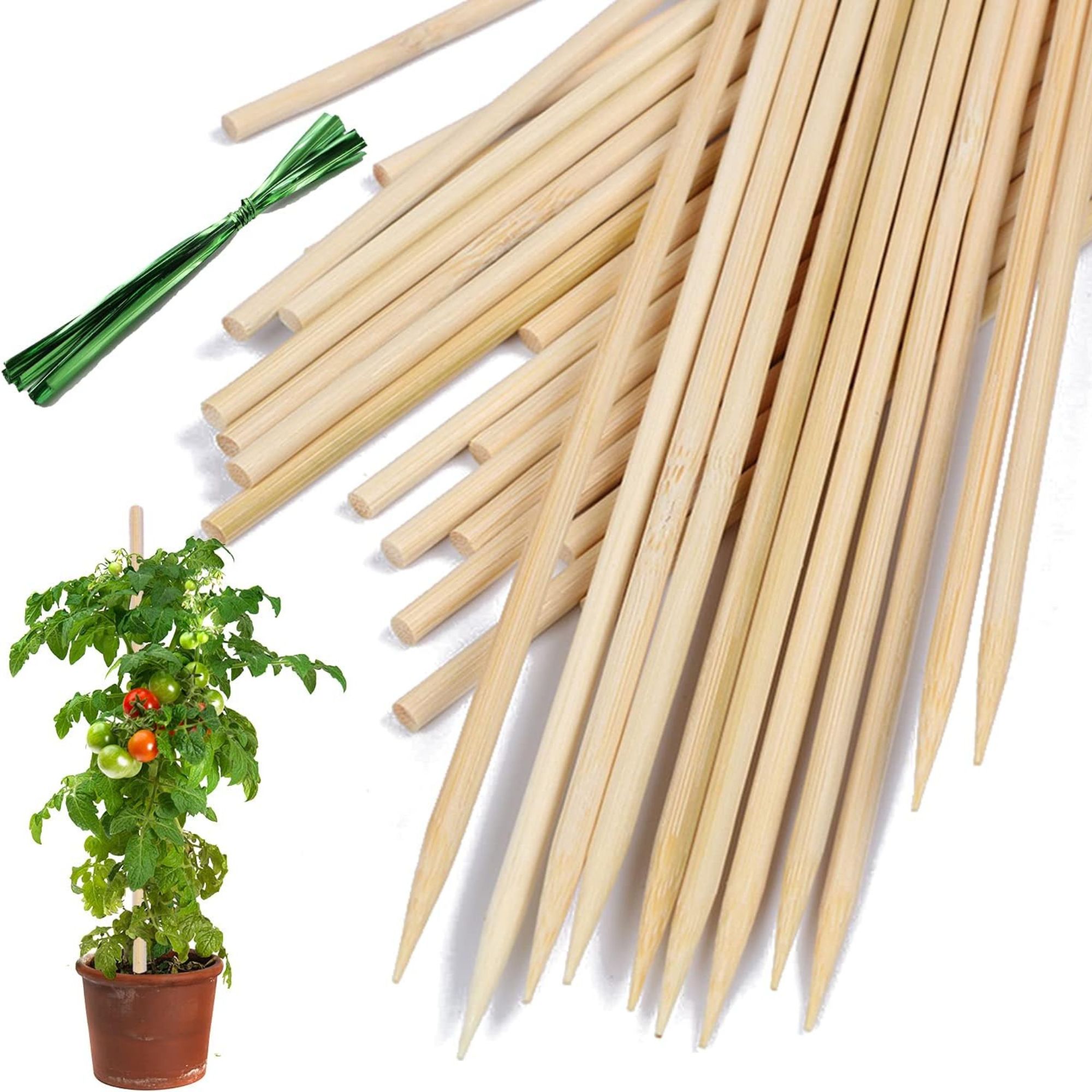
It's summer, and with it, now is prime time to harvest vegetables for seasonal salads (preferably to be enjoyed al fresco). We are taking inspiration from none other than Martha Stewart, who recently shared her June garden update on her blog.
'My large vegetable garden, which is now in its third growing season, is planted with many wonderful crops – tomatoes, brassicas, artichokes, fava beans, celery, carrots, sweet and hot peppers, peas, all sorts of herbs, and so much more,' Martha captioned her Instagram post, sharing some of the photos from the blog.
Want to achieve a robust and beautiful garden like Martha's? She revealed some of her top tips and vegetable garden ideas, and we are taking notes. Most significant of all is how she uses stakes to keep her tomatoes in order.
Shop Martha Stewart's summer garden essentials

Patio Choice Yellow tomato plants can produce over 100 yellow cherry tomatoes on compact plants. They're ideal for smaller vegetable gardens.

Carry your garden tools with ease using this stylish and simple to carry bag. Available in two stunning colors.

Provide support for your garden's plants and vegetables with this 25-pack of wood stakes.
As a summer staple, we immediately scrolled to Martha's tomato growing insight in her blog, and we were not disappointed by her advice.
'It’s easy to spot where the tomatoes are growing by all the bamboo stakes,' she writes on her blog. 'If you’ve ever grown a vining plant, you know how important it is to provide strong structures to which the vines can cling and climb. I stake my tomatoes in stages, using taller, stronger supports as the plants develop.'
She continues, 'I always grow an abundance of tomatoes to share and to make all the delicious tomato sauce I enjoy throughout the year. It’s a good idea to grow a range of varieties, including at least one or two disease-resistant types.'
Among all her traditional summer veg, like kale, sugar snap peas, and artichokes, she also has opted for a delicious, protein-packed plant.
'My gardeners planted a crop of edamame or young soybeans,' she writes.
'They are known for being nutrient-rich, gluten-free, and low in calories, making them a healthy addition to a meal or appetizer eaten alone. The term “edamame” translates to “beans on a branch” in Japanese.'
She explains that spacing out seeds is crucial to their healthy growth: 'The seeds should be planted about an inch deep and four inches apart in rows that are spaced about 15 inches from each other. Once the seeds are pushed into the soil, the rows are raked, marked, and watered. The growing time for edamame is about 95 days.'
With these pro tips, we are feeling inspired to get our gardens to Martha's level for this sunny season. This is your cue to follow her lead.







